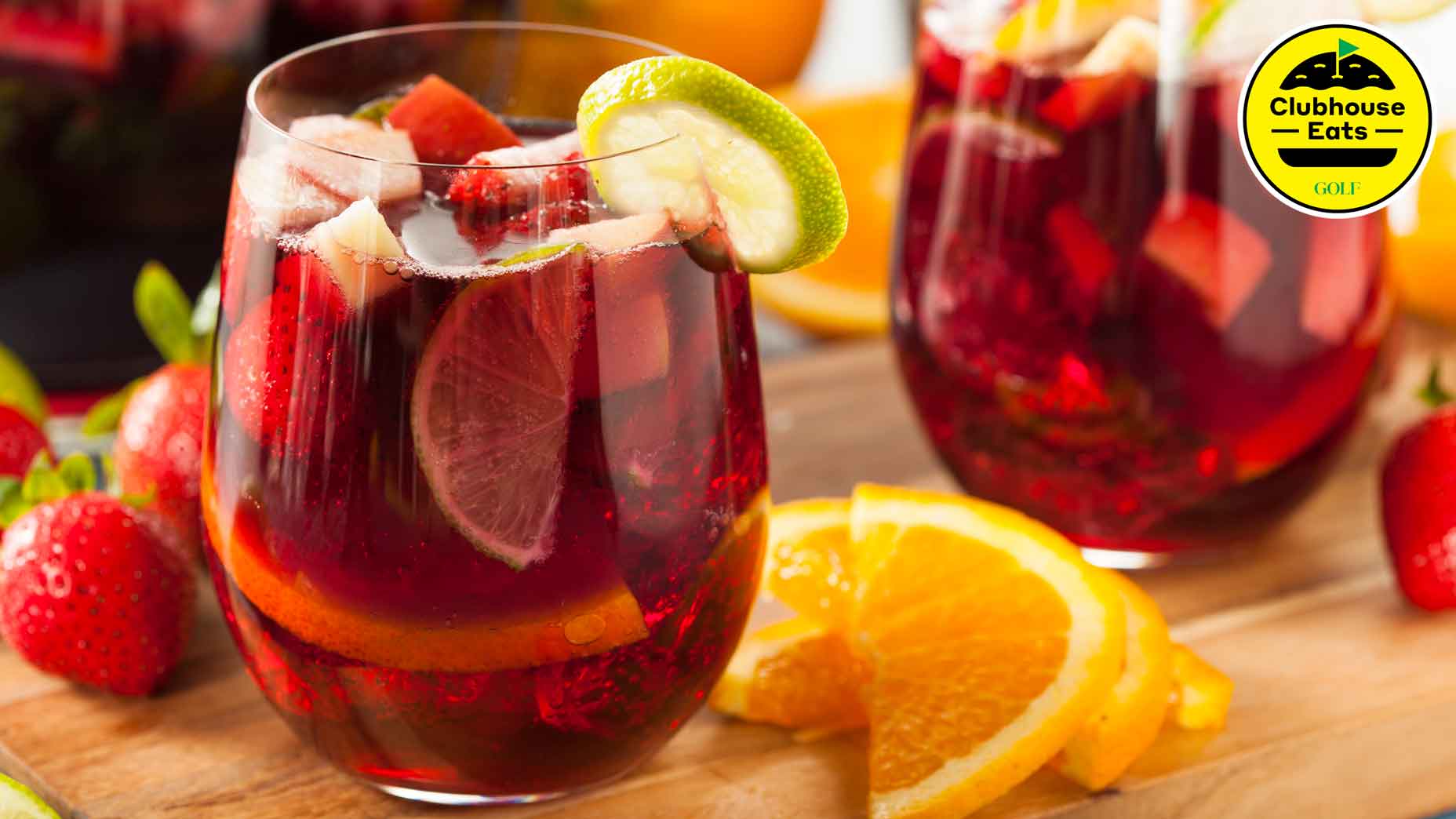Pour yourself a glass and let’s talk about sangria.
Many say the name derives from sangre, the Spanish word for blood. But some trace the origins to the Sanskrit term sakkari, meaning ‘sugared wine.’ As for sangria’s birthplace, that’s been debated, too, pegged variously to Spain, England and Greece. Or was it the ancient Romans who first got things going?
Whatever the case, this much is certain: sangria is a punch of wine and fruit, often with a dash of herbs and spices and a splash of liqueur, and it is popular in Andalucia, where the Solheim Cup is wrapping up today.
Maybe you’re watching the event in person. More likely, you’re tuning in on TV. Either way, it’s possible you’re thirsty.
Melissa Hemmingway, a certified sommelier, is the wine director at Bonita Bay Club, in Naples, Fla. Here are her tips for preparing and serving sangria at home.
The right varietal
Like so much else in life, wine choice comes down mostly to personal preference. Hemmingway’s own leaning is Spanish Granacha (aka Grenache), a thin-skinned, low-tannin grape with a robust, fruit-forward profile that she says “flaunts wonderful berry notes.” On that front, thin-skinned Pinot Noir is a palate-pleaser, too.
True to the sangria’s bloody etymology, both of those are red varietals. But there’s also such a thing as white sangria. In that category, Hemmingway says there are two approaches. One is to use a neutral white varietal, such as Pinot Grigio, “and just let all the fruit, the liqueur and the other accoutrements shine in the batch.” The other is to lean on an aromatic white, such as Alabarino, which, Hemmingway says, “has great notes of peaches, apricots and red grapefruit,” giving rise to “an elevated” result.
The proper temperature
As “a fun and flexible beverage,” Hemmingway says, sangria allows for some wiggle room. But, she notes, it should be served somewhere in the range of chilled to cold. Often people serve it with ice. If you go that route, Hemmingway suggests refrigerating the pitcher between pours, so the ice doesn’t water down the sangria. Not that you should stress out about anything sangria-related. “The rules for (sangria) are much more flexible than for a bottle of wine,” Hemmingway says. “It’s a party in a glass.”
The best type of fruit
For the most part, Hemmingway says, all fruits are fair game, though certain kinds (peaches, for instance) are better-suited to white sangria than to red. One exemption is melon. Aside from cantaloupe, Hemmingway stays away from it, as melon breaks down faster than other fruits. Ripe cantaloupe, though, either balled or cut into thick slices, can work well.
Beyond that, pick your pleasure. Apples, oranges, lemons, limes and berries can be fantastic. And don’t forget cherries, Hemmingway says. “They are delicious and make it extra fruity.”
Steeping time
Sangria is something you age in a cellar. Ideally, Hemmingway says, you should let the fruit steep anywhere from eight hours to overnight. Two hours is the minimum, but with that short window, the flavors won’t be as deep. The maximum time? Hemmingway says not to go longer than 48 hours, as the fruit starts getting bitter at that point.
Other additions
Beyond fruit, Hemmingway says, keep aromatic herbs in mind. “Basil, mint and ginger can give your sangria a wonderful, unique flavor, and they make for beautiful garnishes.” As for liqueur, cointreau is killer in white sangria, while brandy is a great complement to red. While sugar can be used to impart a little sweetness, “a great alternative can be orange juice or maple syrup,” Hemmingway says.
